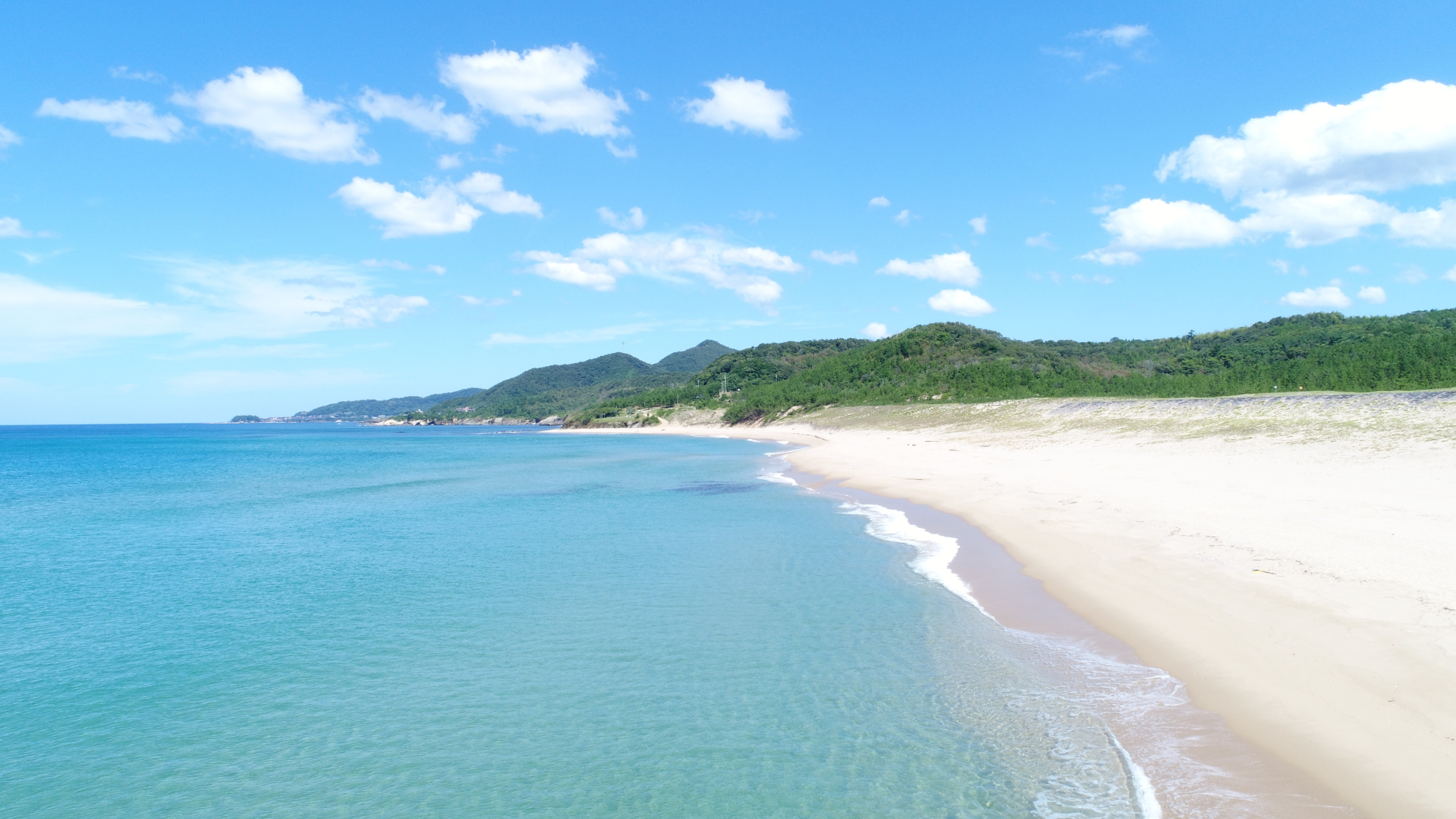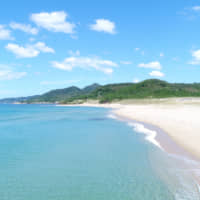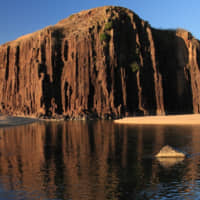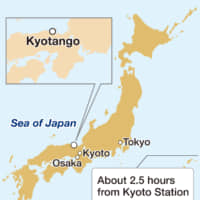This is the first article in a Sea of Japan series, showcasing natural beauty spots, tourist attractions, conservation initiatives and the region’s historical significance.
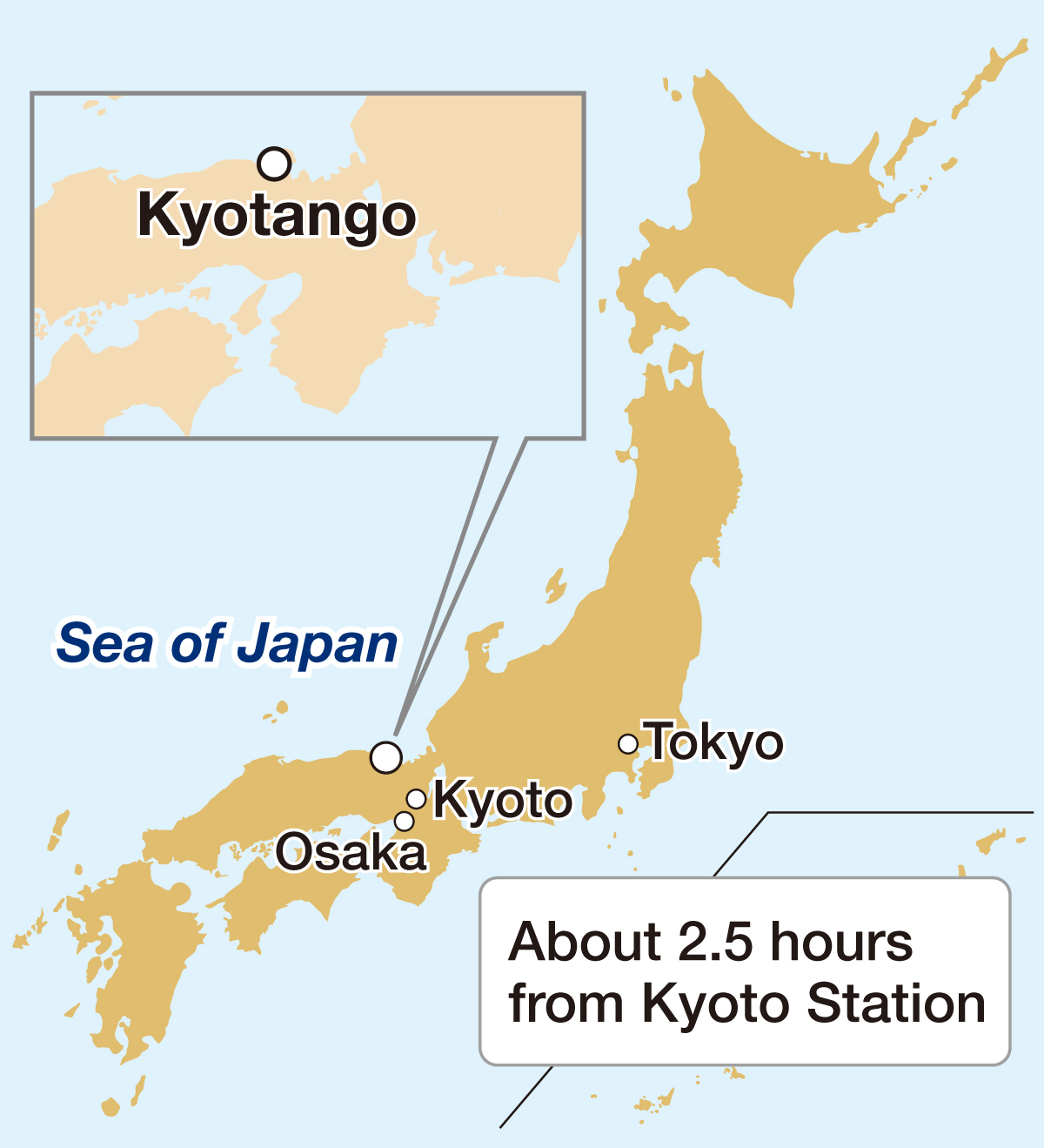
The city of Kyotango in northern Kyoto Prefecture — an area referred to as Kyoto by the Sea — is home to some of the country’s most pristine beaches along the Sea of Japan. At roughly two-and-a-half hours from the capital city of Kyoto, getting there makes for an easy and picturesque meandering train ride or similarly timed drive.
Kyotango, on the Tango Peninsula, is home to 15 beaches, but the Kotohikihama beach district deserves special mention. Its distinctive white sands make a “singing” sound when walked upon and its cleanliness is due to the long-standing efforts of an inspiring community group and support from local officials.
The natural monuments that partially form the UNESCO-designated San’in Kaigan geopark make for impressive scenery. High-quality onsen hot springs with views of the Sea of Japan, a rich history waiting to be explored, an abundance of activities and tantalizing delicacies await.
Picture-perfect scenery
The Tango Peninsula coastline that comprises part of the San’in Kaigan UNESCO Global Geopark makes for a worthwhile detour. Rental car is the most convenient form of travel, but buses traverse the coastal roads. For more confined areas, it is possible to get around by bicycle. Kyoto Tango Railway train stations near the coast include Kumihama, Yuhigaura-Kitsuonsen and Amino.
The geopark’s landscape is marked by majestic cliffs; the inland Uchiyama Beech Forest, popular with hikers and home to around 300 plant varieties; several waterfalls; coastal terraces; and distinct rock formations that date back to when the Japanese archipelago separated from mainland Asia and formed the Sea of Japan millions of years ago.
At the geopark, visitors can also find Tateiwa rock, a rugged 20-meter-high boulder comprised of hardened magma that is approximately 15 million years old. The monolith stands at the mouth of the Takeno River where it meets the sea. One of the area’s most social media-friendly attractions, Tateiwa rock takes on a rusty hue on sun-kissed days, striking a stunning contrast to the rich emerald green waters of Nochigahama beach. Pro tip — the wooden footbridge that crosses the river provides an immediate, photogenic view of the rock. According to legend, a prince killed an oni (demon in Japanese folklore) and the demon became trapped in Tateiwa overnight; it is said that the faint howls of the oni imprisoned within can still be heard.
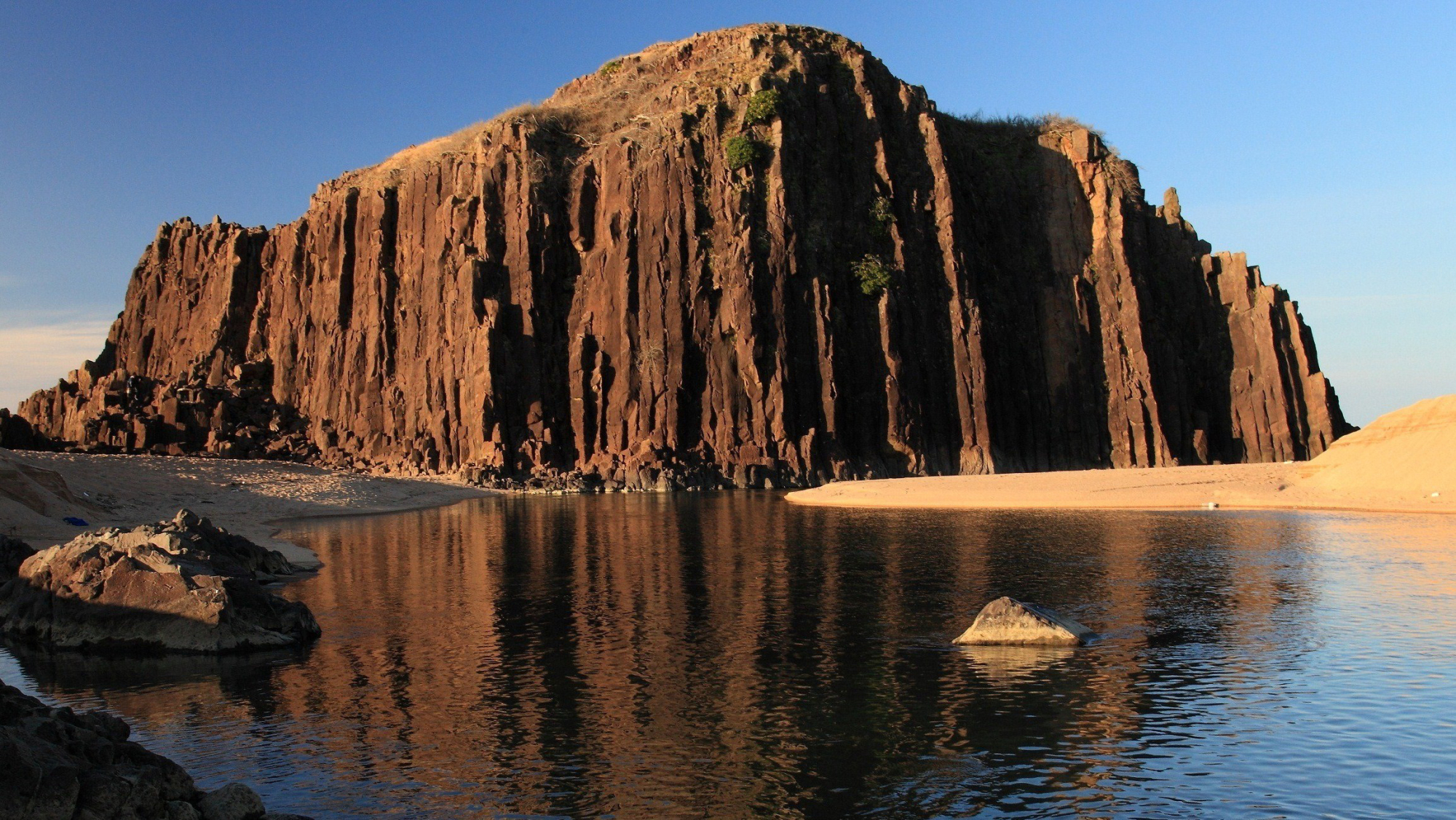
Nearby Byobuiwa rock also juts from the water. Visitors may head to the observatory — about a pleasant 30-minute walk away — to frame photographic images of this rock and capture its beauty against the backdrop of the geopark.
Further afield, Yuhigaura Beach is renowned as a prime sunset viewing spot.
Nature’s gifts, age-old custom
Alternatively, one may opt to see the area’s famed waters, which range from a crystalline turquoise to a vibrant emerald green, up close from a sea kayak. Stand-up paddleboarding is another popular aquatic activity, but in the summer months expect to encounter fellow swimmers basking in the waters of the Sea of Japan and gaining respite from the humidity and heat.

The beachfronts themselves transform into campsites during the warmer months, with most beaches charging nightly fees and space allocated on a first-come, first-served basis. Nochigahama and Kotohikihama beaches are just a few such areas with camping options.
The sea is also a rich food source. Must-try seasonal foods from local waters include Taiza snow crab, Tango cockles and Kumihama oysters. Luscious fruits such as melons, strawberries, peaches, grapes and nashi pears also abound.
Additionally, Kyotango is the birthplace of Tango chirimen (crepe), an impressively soft silk fabric used for kimono. Tango chirimen’s history and culture have been officially designated as part of official Japan Heritage. The broader Tango region has been involved with textile manufacturing for over 1,300 years and Tango chirimen was first produced approximately 300 years ago.

Chirimen is formed from silk strands that are twisted and then unwound, creating a fine, crimped waffled texture. The fabric is also used for making purses and similar accessories, as well as for traditional furoshiki wrapping cloth. It is not only possible to visit areas in Kyotango where this high quality fabric is produced, but to also see how chirimen is made.
The Chirimen Culture Center at the Amity Tango souvenir and tourist center in the Amino district offers workshops in chirimen stencil dyeing, as well as an extensive array of chirimen goods for purchase.
Environmental initiatives
Kotohikihama beach, one of the city’s most popular beaches, is framed by pine trees and features sand that “sings” when walked upon due to its especially high quartz content. For this phenomenon to occur, the sand must be extraordinarily clean. The Environment Ministry has classed this phenomenon on an official list of 100 Soundscapes of Japan. The designation is fitting for a beach that’s name is comprised of kanji characters for “plucking a koto’s strings.”
A must-see is the nearby Kotohikihama Singing Sands Museum, where visitors can learn more about this occurrence. The museum also provides valuable insight into the history of the beach and local efforts to preserve the environment.
The cleanliness and unspoiled nature of this 1.8-kilometer beach is due in no small part to the concentrated efforts of the 150-odd members of the Kotohikihama Singing Sands Preservation Group, as well as the local government, who have worked together for more than 30 years. The group’s main activities are now patrolling the beach and investigating articles washed ashore, with residents cleaning and maintaining the beach.
One of the group’s major success stories was seeing Kotohikihama beach ban cigarette smoking; tobacco ash interferes with sand quality and affects the singing sands. Kotohikihama is said to be the first beach to be classified as nonsmoking in Japan. Viewing the pristine beach today, it is also hard to imagine it being subject to a major oil spill in the Sea of Japan off the Oki Islands in Shimane Prefecture in 1997. It was through the hard work of the group and volunteers that the beach was restored to its former state.
For group member MIURA Itaru, the highlights of the preservation group’s efforts since it was formed in 1987 are, “The groundbreaking approach to designate beaches as nonsmoking, the creation of the Singing Sands Museum, and the designation of Kotohikihama beach by the Japanese government as an official Natural Monument, as well as a Place of Scenic Beauty.”
The preservation group also hosts educational field trips in the area for overseas students to learn more about the coast and the ocean environment.
Another creative initiative by locals and other members of the public to clear the beach and surrounding areas of rubbish such as plastics is the “Barefoot Concert” — an annual music event that has been held since 1994 where the price of admission is a collected piece of garbage.
TABETA Shusaku, an official working in Kyotango’s environmental affairs department, describes the combined efforts among the public, community group and municipal government as a symbiotic “model for how best-practice town planning can develop in the future.” This model has seen the beach flourish as a popular tourist spot and become a model for sustainable environment through the effective use of local resources.
This series is sponsored by the government of Japan.




